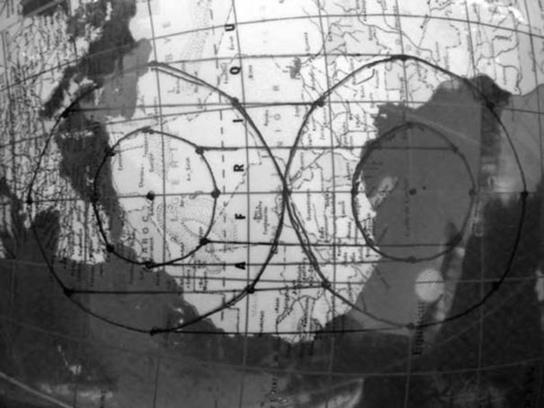
NavList:
A Community Devoted to the Preservation and Practice of Celestial Navigation and Other Methods of Traditional Wayfinding
From: Peter Fogg
Date: 2006 Jun 18, 10:23 +1000
George wrote:
> Peter Fogg is worried about the fundamental
reason behind all this.
No, just interested enough to
ask. Why would anyone be worried about this?
> First, I should make it clear that it's nothing
whatever to do with
> the fact that the Earth deviates slightly from a
sphere. Everything
> has assumed an exactly spherical Earth.
Fine.
> I can suggest an illustration that may help, by
showing the converse
> of my argument.. No doubt he owns some sort of
globe of the Earth.
> Take something with a circular rim, like a
wineglass, which has a
> radius that's a large fraction (half or more,
say) of the radius of
> the globe. Put four markings at 90-degree
spacings around the rim of
> the glass, marking two opposites to be North and
South. And put four
> more markings in between, at the 45 deg
positions. They don't need to
> be specially accurately done. Now put the rim
over some position on
> the Earth, such as (0N, 0W), with the N and S
marks on the 0 deg
> meridian and two others on the Equator.
>
> Next, slide the glass due North by a few degrees,
keeping the N and S
> marks on the 0 deg meridian. First, check what
happens to the marks at
> E and W. They also move due North; no problem
there, though that
> motion will actually be a bit less than the N and
S marks. But look
> hard at the in-between markings, at the four
45-deg positions. They
> are shifting, not along a North-South meridian,
but at a completely
> different angle. Their courses differ considerably.
And there you have
> it. To keep a true circular shape, when you shift
a circle, different
> parts of the circle must move in different
courses, and by differing
> amounts. Conversely, if you insist that they all
must move along the
> same course by the same amount, the result cannot
be a circle. Not a
> formal proof, I know, but is it sufficient to
convince Peter Fogg?
Here is a circle, radius is about 15 degrees, so inner
radius about 7.5 degrees, centred on N/S 0,E/W 0. The circle has then been
moved 15 degrees to the north (and the image turned on its side to fit the ‘paper’,
and contrast increased).
> “But look
> hard at the in-between markings, at the four
45-deg positions. They
> are shifting, not along a North-South meridian,
but at a completely
> different angle. Their courses differ considerably.
And there you have
> it.”
Am not sure what it is that I have (apart from a
defaced globe!). Yes, the courses as drawn are not due north (particularly the
outer ones), but isn’t that due to lines of longitude converging towards the
pole? The displaced circle hasn’t been distorted at all, since it is an
external fact that has been imposed on the sphere? What would change that?








